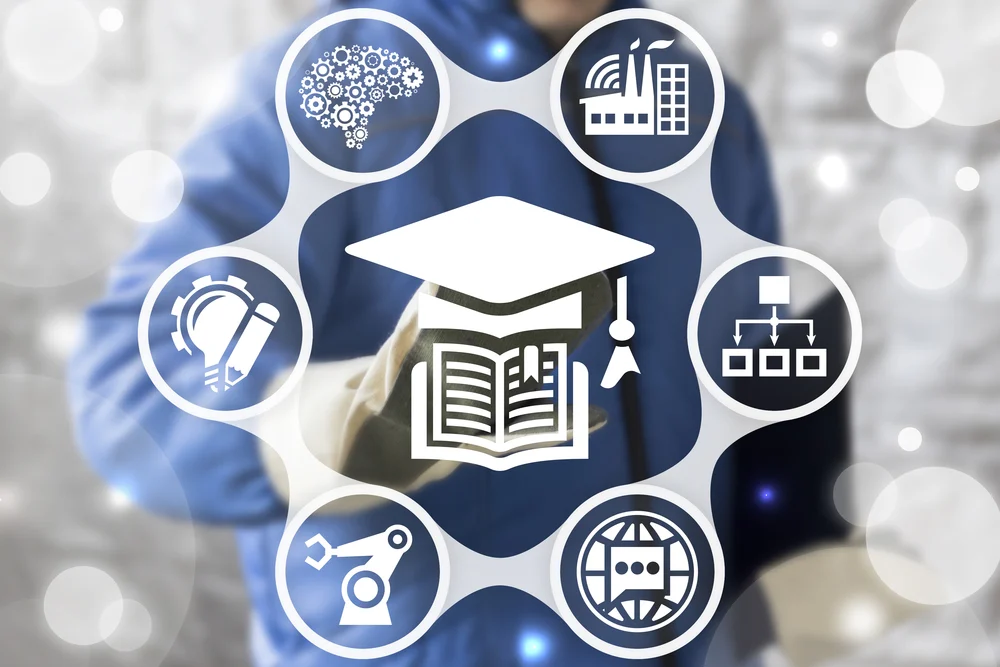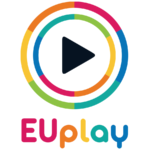
This article is inspired by the research Eurospeak Limited conducted for the first project result of the EU Play project: “The Teachers’ Education 4.0 Guide”.
As the world has worked its way to the 4th Industrial Revolution, the technological advances that were obtained in the last few decades brought in many changes for today’s society. One of the fields that have experienced massive repercussions due to technological advancement has been education. Moving on from Education 2.0 and Education 3.0 that enabled students with greater connectivity, interaction, and access to information, Education 4.0 came with a whole new perspective on how knowledge should be transferred to those learning (“Education 4.0 and Its Impact on the Educational System during the Pandemic and Post Pandemic Covid 19 in Ecuador,” 2021). Focusing on preparing students for a world where smart technology, artificial intelligence, and IoT will be a part of their everyday life (both personal and professional), teachers are expected to help students acquire diverse sets of skills, giving way to a more personalised learning experience and relying on students’ feedback (Fisk, 2017).
Education 4.0 comes with many benefits for students such as retaining information more effectively through virtual reality and acquiring digital and soft skills essential to compete in the future labor market. However, it also raises questions as to how the deeper connectivity impacts societal structure. The new way of learning is believed to have harmful consequences in making people more disconnected from one another. (“Strengths and Weaknesses of Education 4.0 in the Higher Education Institution,” 2019). Having enabled education to be accessible from anywhere, at any time, the fear of hampering students’ social skills and pushing them into a cybernetic world is not one to disregard. In addition to this, some studies have proven that being in a classroom helps students socialise and feel safe and a part of a broader community (AspenInstitute, 2020). The unexpected arrival of Covid-19 that forced online learning has only amplified the feeling of social isolation that could inevitably lead to loneliness and withdrawal from society (DeRobertis E. M. and Saldarini R. A., 2003). A few studies express their concern about a potential increase in school dropouts in children population (Rodríguez et al., 2014; Mendoza-Rojas, 2015), and UNICEF considers the loss of contact between children and teachers to be the main reason. What is more, there is an undeniable chance of an even higher digital divide, as enormous inequality in resources and institutional infrastructure between schools creates advantage for those coming from privileged environments, the instance being popularly called the ‘Matthew effect’ (Rigney, 2010). A topic of echo chambers that has gained a lot of attention with the rise of social media is also one to consider when evaluating the perils of online education. An echo chamber is an “environment where a person only encounters information or opinions that reflect and reinforce their own (Digital Media Literacy: What Is an Echo Chamber?, n.d.). Having the ability to learn from home using technology creates a higher potential occurrence of homeschooling that could exempt children from acquiring holistic knowledge and gaining perspective on different values.
Having considered all of these, it is safe to say Education 4.0 is not as harmless as some may think. However, not any transformation has come without its challenges. The times are changing, and so are the needs of students. If we want to create people who’ll have a chance in a competitive labour market, education must adapt. Using technology as a tool, and “frequently enough to raise the level of understanding from both teacher and student perspectives” (“Strengths and Weaknesses of Education 4.0 in the Higher Education Institution,” 2019) means we are on the right track to overcoming the difficulties it brings along, as well as enabling students to learn in a fun, original and stimulating way.
References
- De Robertis E. M. and Saldarini R. A. (2003) Technology as a contributor to isolation and loneliness incontemporary culture, Community College Humanities Review, 24 (1-13) https://www.academia.edu/7281263/Technology_as_a_contributor_to_isolation_and_loneliness_in_cont emporary_culture_2003
- Digital Media Literacy: What is an Echo Chamber? (n.d.). GCFGlobal.Org. https://edu.gcfglobal.org/en/digital-media-literacy/what-is-an-echo-chamber/1/
- Education 4.0 and its impact on the educational system during the pandemic and post pandemic Covid 19 in Ecuador. (2021). Sinergias Educativas. https://doi.org/10.37954/se.v7i1.332
- Peter Fisk (2017) Education 4.0 … the future of learning will be dramatically different, in school and throughout life. https://www.peterfisk.com/2017/01/future-education-young-everyone-taught-together/
- Strengths and Weaknesses of Education 4.0 in the Higher Education Institution. (2019). International Journal of Innovative Technology and Exploring Engineering, 9(2S3), 511–519. https://doi.org/10.35940/ijitee.b1122.1292s319


 Previous Post
Previous Post Next Post
Next Post